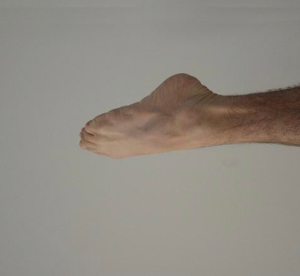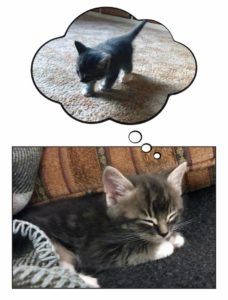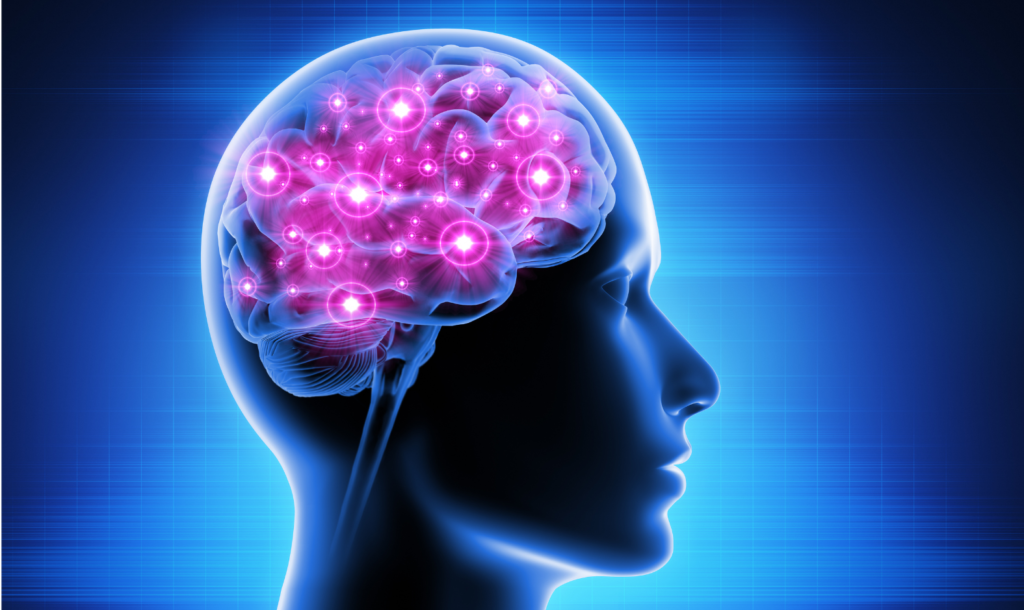Share this article
Neuroplasticity and Motor Imagery (Imagined Movement) Part 2
In case you missed the first part, read Neuroplasticity and Motor Imagery (Imagined Movement) Part 1 here.
This article was written by Chris Lamb, Registered Physiotherapist at Dockside Physiotherapy.
Below are examples (but is not an exhaustive list) of different types of motor imagery (from least likely to be provocative, to most likely):
- Left/right discrimination
- Action observation
- 3rd person motor imagery
- 1st person motor imagery + action observation (of other)
*See below for descriptions of each. When considering the most appropriate type of imagery for your situation, it is important that it does not provoke symptoms; remember, we are trying to “unwire” symptomatic responses from the movement pattern(s). In most cases of persistent pain, the “threshold” for activating pain has lowered over time, and it is prudent to start with a type of imagery just below this threshold.
Left/right discrimination

Left/right discrimination is a type of motor imagery that is below the level of conscious awareness (it is sometimes referred to as “implicit” motor imagery). It involves viewing images of parts of the body, and determining if it belongs to, or is rotated towards, the left or right side. Since it is below the level of conscious awareness, it is very, very unlikely to provoke pain (but still activates some of the motor areas in the brain, particularly the premotor areas (areas of the brain that help with the planning and preparation of movement)). For example, when looking at the picture to the left, to decide whether if it is left or right foot, you will (unconsciously) rotate an image of your own foot to determine if it matches what you see.
Action observation (usually involves watching someone else perform movements)

Action observation simply involves watching another person (or potentially video footage of yourself on a screen) perform movements. This observation activates “mirror motor neurons” in the brain. Similar to left/right discrimination, it is unlikely to provoke pain and activates motor neurons in the premotor and supplementary motor areas of the brain (refer to the image below for location). As noted above, these areas are important for the planning and preparation of movement – and numerous studies have shown that systematically watching others perform specific movements can improve motor learning. It should be noted, however, that in very sensitive individuals (i.e. those with a very low “pain threshold”) , watching others perform movements can cause pain (and other associated symptoms); in this case, it is best to start with left/right discrimination.

Third person perspective motor imagery
Third-person motor imagery involves imagining yourself or someone else moving at a distance from yourself. This form of imagery does not show any significant activation in the motor areas of the brain but shows much stronger activation in the visuospatial areas of the brain. Since it does not activate motor areas that may be “wired” with symptomatic responses, it is unlikely to provoke pain. This may be used, in select cases, to expose the person to movement patterns in a very safe and non-threatening way (and as a stepping stone to other forms of movement imagery).
First person motor imagery + action observation (watching someone else perform movements)
In contrast to third-person motor imagery, first-person motor imagery involves imagining the movement as coming from within the self. This shows significant activation in the sensory motor areas of the brain responsible for movement (*this is the type of motor imagery used in the previously described experiment showing the change in finger representation with imagined finger movement). If you looked at a brain scan (e.g. fMRI) of someone doing a particular movement in reality compared to imagining the same movement using first-person motor imagery, the scan would look very similar. For this reason, it is much more likely to provoke pain and other associated symptoms (which is why you may need to start with one of the three previously described types of imagery). Further, there are limitations to doing this as a stand-alone technique. First, for many people, it is hard to conjure a clear image of their own body performing the movement(s), and this will make the imagery less effective (and there will be less associated brain activation). At times, when something has been painful and there have been repeated compensations (e.g. unable to lift the arm past 90 degrees), it becomes even harder to imagine the movement clearly (and some people report they can’t create an image of the movement at all!). Not everyone can create an image as lucidly as baby Cohen below!

Further, you can only imagine movement as fast as you can perform in reality (because it involves the same motor pathways). If you have been in pain, particularly for some time, movement tends to become much less flexible and more consistent – this may include moving more slowly or moving with less diversity of speed.
The brain puts a lot of weight/importance on visual feedback to guide motor activities (about 50% of our sensory processing is dedicated to vision alone). *This is why watching images of movement while, at the same time, imagining the movement can be a more effective imagery technique. As a first step, video footage can be taken of another person, and the footage can be edited so each movement is at a slightly different speed. In practice, you would watch this other person performing normally provocative movement(s) (a very clear visual representation) while concurrently imagining the movement. *When you combine clear visual feedback with imagery, the brain activation becomes very close to the actual movement (and is often less painful than trying to imagine the movement alone).
Summary
The idea is to activate and strengthen these motor pathways in the brain, but without the painful/symptomatic response (*remember, “nerves that fire apart, wire apart”). With time and enough repetition, these healthy and symptom-free motor patterns will become the new normal (*remember the concept of use-dependent plasticity – the more any pattern is reinforced, the stronger it becomes). In other words, you will have “unwired” the symptomatic associations, and “wired in” new healthy patterns. Further, using these practices can result in increased strength, diversity, and coordination/control with movement, because imagery reinforces/strengthens these pathways in a very similar way to physical practice. Pain is often associated with an increase in perception of threat. In other words, certain movement patterns can become misinterpreted by the brain as unsafe (and pain serves a protective function). These practices continually provide reinforcement to the brain that these movements are, in fact, safe – and with time and repetition, “unwire” the associated threat response.
It should be noted that motor imagery can be used in many different ways that have not been outlined in this article. It has been used since the 1930s and studied extensively for many decades. It is primarily used to improve sports performance – but is also used in many types of rehabilitation other than chronic pain (e.g. post-stroke, Parkinson’s disease, post-fracture, etc.).
In summary, you are aiming to weaken the links between certain movements and pain/symptoms/threats (“nerves that fire apart, wire apart”). You are aiming to create new healthy pathways linking the sensory/motor areas of the brain with the successful, safe, and symptom-free completion of movements (“nerves that fire together, wire together”). The more these pathways are reinforced, the stronger they will become – which can also result in increased strength, diversity, and coordination/control with movement. According to Merzenich (2013), “the brain is changed by internal mental rehearsal in the same ways and involving precisely the same processes that control changes achieved through interactions with the external world” 1 — therefore imagined movements can be a powerful driver in creating and reinforcing these new healthy pathways.
If you’re interested in learning more about physiotherapy, take a look at our post on the Benefits of In-Home Physiotherapy.
Looking for a physiotherapy clinic near you? Click here to book your appointment today.
Quotations:
1) Merzenich M. Soft-wired: How the new science of brain plasticity can change your life. 2nd edition. Berkeley: Parnassus Press; 2013.
To learn more about health providers in your area or to ask about providers who address specific treatment needs, contact us today.
About the author

Chris Lamb
Chris has been a registered physiotherapist since 2006 and has extensive experience helping people with orthopedic and/or neurological injuries and conditions. He has worked in both private clinic and community settings, and has taught numerous courses on topics such as pain science and treatment, neuroscience and neuroplasticity, and mindfulness meditation. Over the past few years, he worked with a neurologist weekly co-teaching classes to his patients. Chris is also currently involved in research projects on motor imagery in persistent pain and neurological conditions.
-
Chris Lambhttps://medimap.ca/author/chris-lamb/



